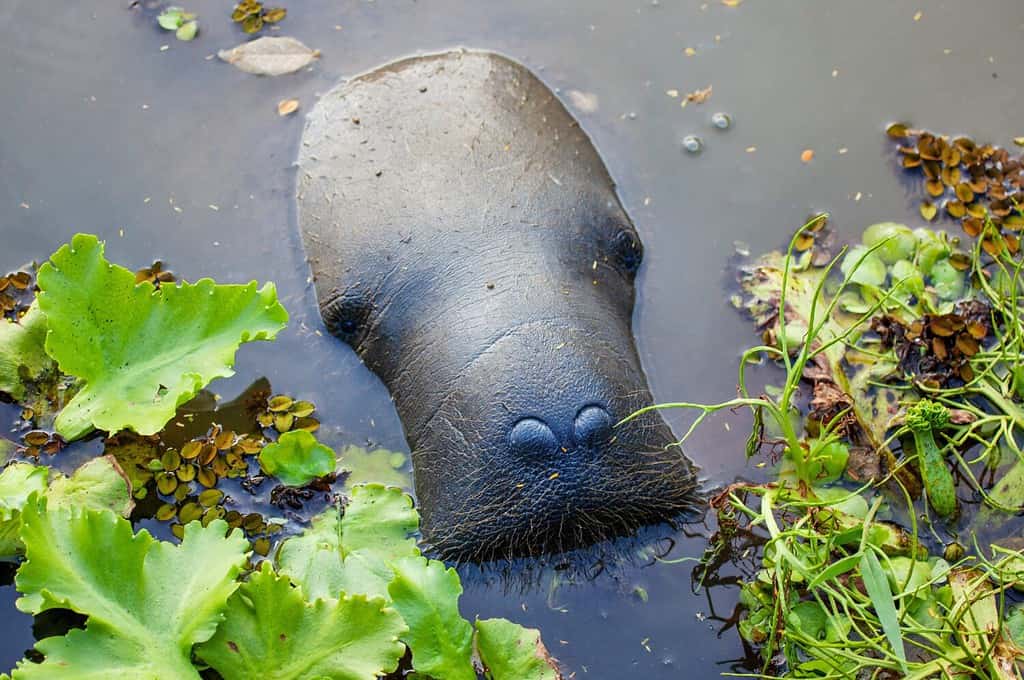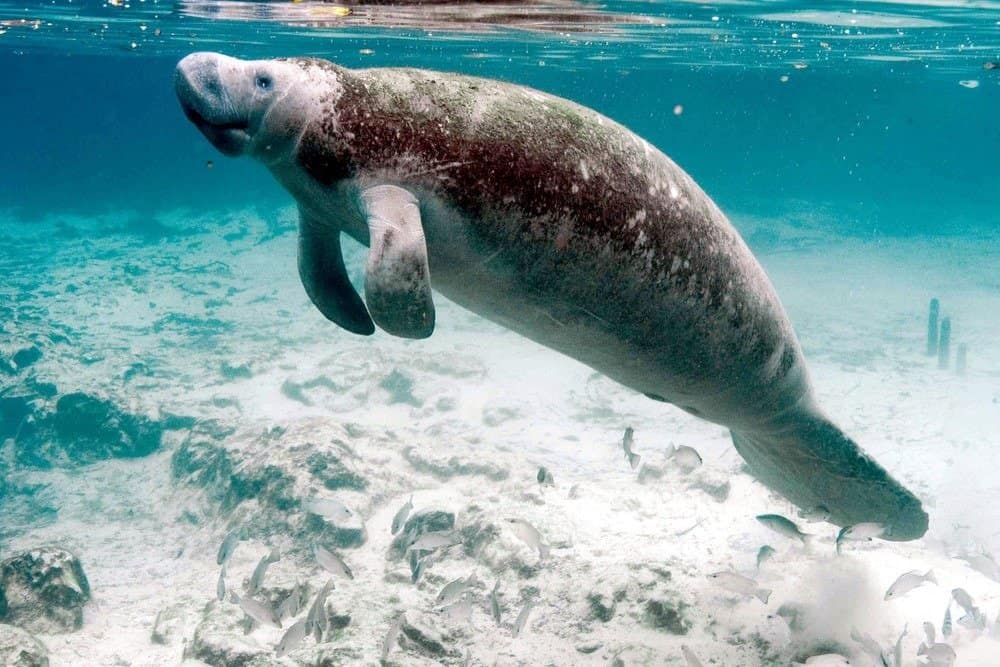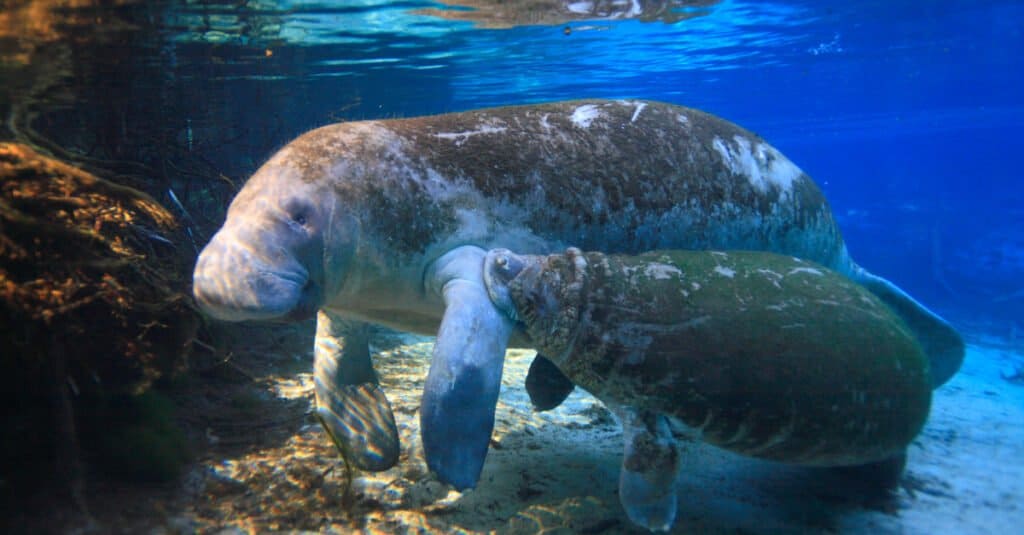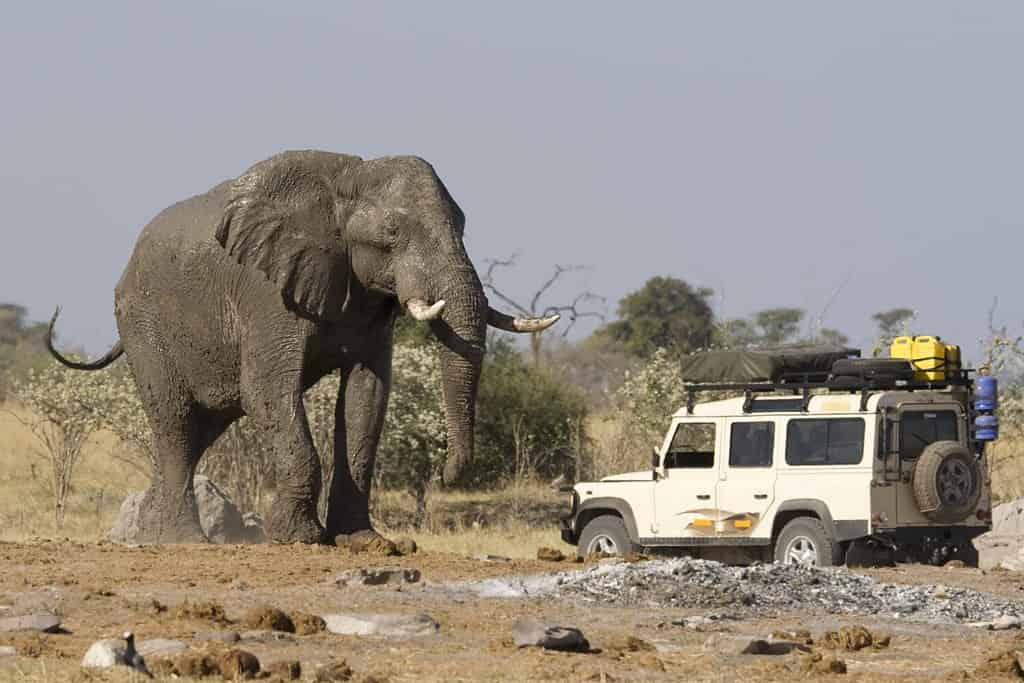For those of us who don’t live near the Gulf of Mexico or other coastal places, manatees can be an animal you forget about, one you remember only in passing when mentioned. But these gentle giants of the water are fascinating animals and deserve far more attention.
One of their most captivating features is their impressive size. So, just how giant are they? We’ve made this manatee comparison guide to give you a better understanding of how they compare to humans, other aquatic mammals, and even elephants.
Types of Manatees and Their Sizes

As a mammal, manatees don’t breathe water and must come up for air regularly.
©Victor1153/Shutterstock.com
Manatees are gentle, slow-moving aquatic mammals that favor the warm waters near the Equator. Fun fact is many believe that when the first explorers returned to Europe with reports of mermaids in the waters around Florida, the Caribbean, and South America, they were actually seeing manatees! Also known as ‘sea cows’ due to their herbivorous diet, there are three main species as well as a few subtypes.
The West Indian manatee (Trichechus manatus) is debatably the largest species of manatee and can grow over 14 feet long — longer than the average length of a car — and can weigh over 1,200 pounds. The West Indian manatee includes two subspecies, the Florida manatee and the Antillean manatee.
West African manatees (Trichechus senegalensis) are both bigger and smaller than their West Indian cousins. Though they can grow slightly longer — with the largest recorded approaching 15 feet — West African manatees only weigh in at around 800 pounds.
Now to the babies of the family. The Amazonian manatee (Trichechus inunguis) prefers freshwater to saltwater and only grows to about 10 feet long. But only 10 feet long is still longer than a one-person kayak, so they’re still very impressive! Interestingly, scientists believe they’ve discovered some hybrid manatees that have resulted in crossbreeding between West Indian and Amazonian manatees. This diversification of the gene pool could be beneficial, as all three species of manatees are listed as vulnerable on the IUCN Red List.

Manatees are graceful swimmers, using their spoon-shaped tails and flippers to propel themselves.
©Ramos Keith, U.S. Fish and Wildlife Service / public domain – Original / License
How Big Are Manatees When They Are Born?

Manatees form strong attachments to each other, and babies stay with their mothers for up to two years.
©Thierry Eidenweil/Shutterstock.com
As mammals, manatee mothers give birth to one live calf after a gestation period of about 13 months (and we thought nine months was brutal!). All large animals also have big babies, and the manatee is no exception! Baby manatees can weigh in at over 60 pounds at birth and measure between three and four feet long.
The Largest Manatee Ever Recorded
Several manatees recorded over the years have been absolutely massive, even relative to the species’ already-large standards. Scientists reported a female manatee measuring 15 feet long and 3,649 pounds in Florida, and she remains the largest ever recorded.
At a close second, SeaWorld’s Animal Rescue Team assisted an injured female manatee — affectionately called Rita — who weighed 3,000 pounds and measured 12 feet long. Rita was rehabilitated and released in 2009.
Manatee vs. Human Comparison
Thankfully, manatees are naturally very peaceful — otherwise, they’d be formidable foes! Ranging from 10 to 15 feet, all three species of manatee easily outmatch humans, both in height and weight. The average human is between five and six feet and 170-200 pounds. It would take at least two humans end-to-end to even come close to being as long as the smallest manatee.
Manatee Size Comparison to a Walrus

Walruses rely on a thick layer of fat to survive the cold.
©Danita Delimont/Shutterstock.com
Many people compare the shape and look of a manatee’s face to that of a walrus. Really, all that’s missing are the tusks! In the wild, manatees will never naturally cross paths with walruses since they live in waters of opposite temperatures, but how do they compare size-wise?
Though walruses only reach about 11 feet long, they can weigh up to 3,000 pounds! So, in the length category, manatees win — but walruses can far outweigh even the chunkiest manatee.
Manatee Size Comparison to a Dolphin

Dolphins are far more energetic than manatees.
©Andriy Nekrasov/Shutterstock.com
Another aquatic mammal, dolphins, are found worldwide and are beloved by many. Sleek, playful, and fast, dolphins may seem like the complete opposite of manatees. But in terms of size, they’re not that different! The largest dolphins can reach 13 feet and nearly 700 pounds, so they’re as long as the average manatee if not quite as heavy. But given the differences in their lifestyles, this difference makes a lot of sense.
Manatee Size Comparison to an Elephant

Distant cousins, manatees, and elephants share several characteristics.
©Josep Pena Llorens/Shutterstock.com
Though manatees can’t really be called tall since they’re mostly horizontal, the length of a manatee’s body is about the same as an African elephant’s height. Adult African elephants can range in height from eight to 13 feet. So, the next time you see an elephant, you can also picture the size of a manatee!
Did you know that manatees and elephants are related? Though it’s a very distant relationship — both in terms of preferred habitat and evolutionarily — both manatees and elephants are descendants of a common ancestor. Similarities can be seen in the thick and wrinkly skin, the sparse and thick hairs on their bodies, and the prehensile nature of a manatee’s upper lips and an elephant’s trunk.
Where Do Manatees Live?
All three manatee species live in warm waters, either just off coastlines or inland freshwater sources. However each species prefers a specific area and key aspect of their respective ecosystems.
West Indian manatees are found in the coastal waters between southeastern U.S. states and Central and South America. With such a large potential habitat, each subspecies tends to stay in a certain area: the Florida manatee is found farther north and is common in the Gulf of Mexico and the southern coast, while the Antillean manatee stays farther south and can be seen in the waters between the Caribbean and Brazil.
As their name suggests, West African manatees live across the Atlantic Ocean in the waters of West Africa. These manatees are rarely seen by humans but are nonetheless crucial to the health of the inland and coastal Guinean Mangroves of West Africa as they eat invasive species competing with the mangroves and prevent overgrowth.
At home in the Amazonian River Basin and its tributaries in South America — a drainage basin that covers nearly three million square miles — the Amazonian manatee is also aptly named for their native habitat. Amazonian manatees group together during the summer dry season when some of the rivers and tributaries become too shallow for them or dry up entirely.
Thank you for reading! Have some feedback for us? Contact the AZ Animals editorial team.








